Getting mesmerized by some aluminum-made window samples may raise the question: which glass type is the right one? The aesthetic choice also carries weight far beyond appearance.
The right aluminum window can enhance durability, optimize insulation, improve energy efficiency, and ensure long-term performance. And this article digs up standard aluminum window glass types.
Understanding Aluminum Windows
Aluminum windows feature frames made from extruded aluminum. It’s a lightweight yet powerful version of the metal. These frames lay the structural skeleton to hold the glass in place.
Unlike wood or vinyl, aluminum doesn’t warp, crack, or swell with temperatures. It’s also resistant to corrosion, especially when powder-coated or anodized. You’ll find aluminum windows in –
- High-rise buildings and commercial towers.
- Coastal homes are exposed to salty air.
- Modern residences with large glass panels.
Their minimalist profiles allow for larger glass expanses, maximizing natural light and outdoor views.
Benefits of Aluminum Frames
- Strength and Durability: Supports large panes; resists warping, rust, and weather damage.
- Longevity: Lifespan of 30–50 years with proper care.
- Low Maintenance: No repainting or sealing; just occasional cleaning with mild soap.
- Slim Profiles: Enables expansive glass views with minimal visual obstruction.
- Design Flexibility: Can be powder-coated in any RAL color; fits modern and traditional styles.
- Sustainability: 100% recyclable; contributes to green building certifications.
In coastal regions, aluminum windows with powder-coated finishes have shown zero corrosion after five years of exposure to salty air.
Common Aluminum Window Glass Types
Single Glazed Glass
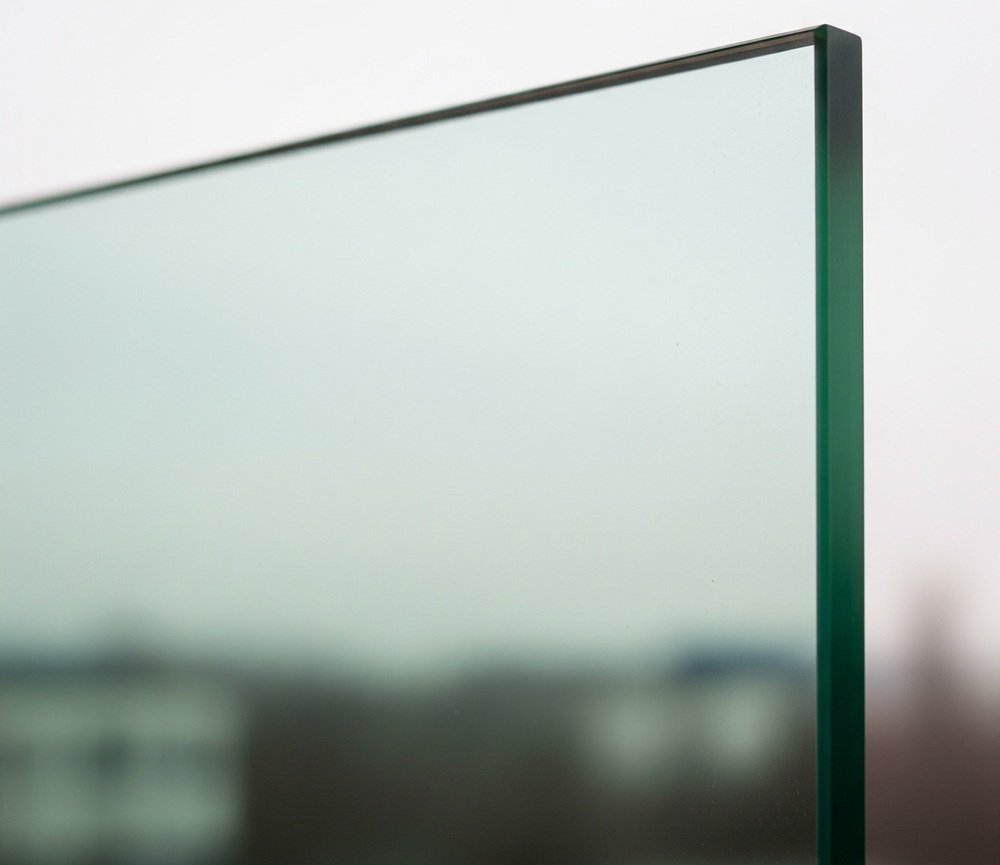
Single-glazed glass consists of a single pane, typically 3–10 mm thick, made from float or crown glass. It’s the most basic form of glazing, often found in older buildings or budget installations.
Benefits
- Cost-Effective: Cheapest option available.
- Cost: Foat glass costing around £35/m² and toughened float glass ~£70/m².
- Lightweight: Easier to transport and install.
- Simple repairs: Easy to replace without specialized tools.
Downsides
- Condensation risk: Prone to moisture buildup and mold.
- Poor insulation: U-value ~5.8 W/m²K, leading to significant heat loss.
- Minimal soundproofing: Offers only ~20 dB noise reduction.
Best Uses
- Heritage buildings.
- Mild climates (coastal regions).
- Temporary structures or budget-limited projects.
Double Glazed Glass
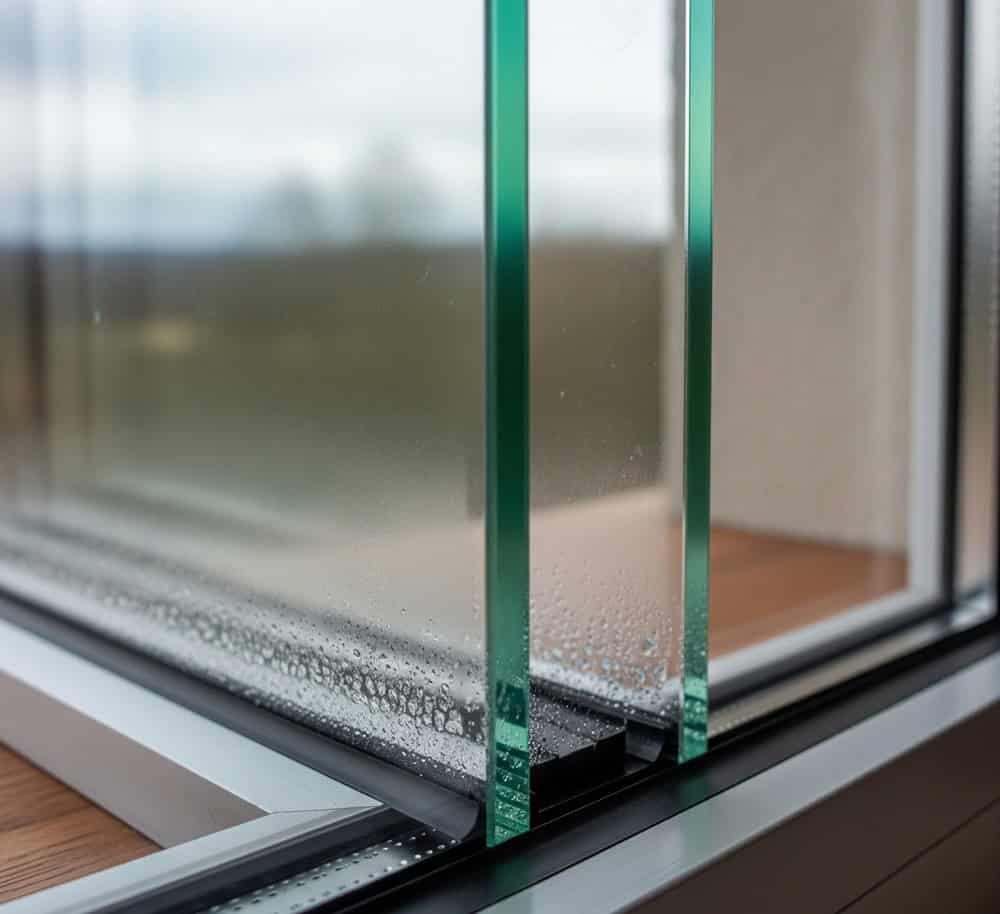
Double glazing features two panes separated by an air or inert gas (argon/krypton) layer, sealed within an insulated glass unit (IGU).
Benefits
- Excellent insulation: U-value ~1.4 W/m²K.
- Noise reduction: Up to 70% less noise compared to single glazing.
- Energy savings: Lower heating bills by 20–30% annually.
Downsides
- Higher upfront cost: ~£120–£150/m².
- Heavier: Requires stronger frames.
- Complex installation: Needs professional fitting.
Best Uses
- Homes in colder regions.
- Urban areas with traffic noise.
- Energy-conscious buildings.
Triple Glazed Glass
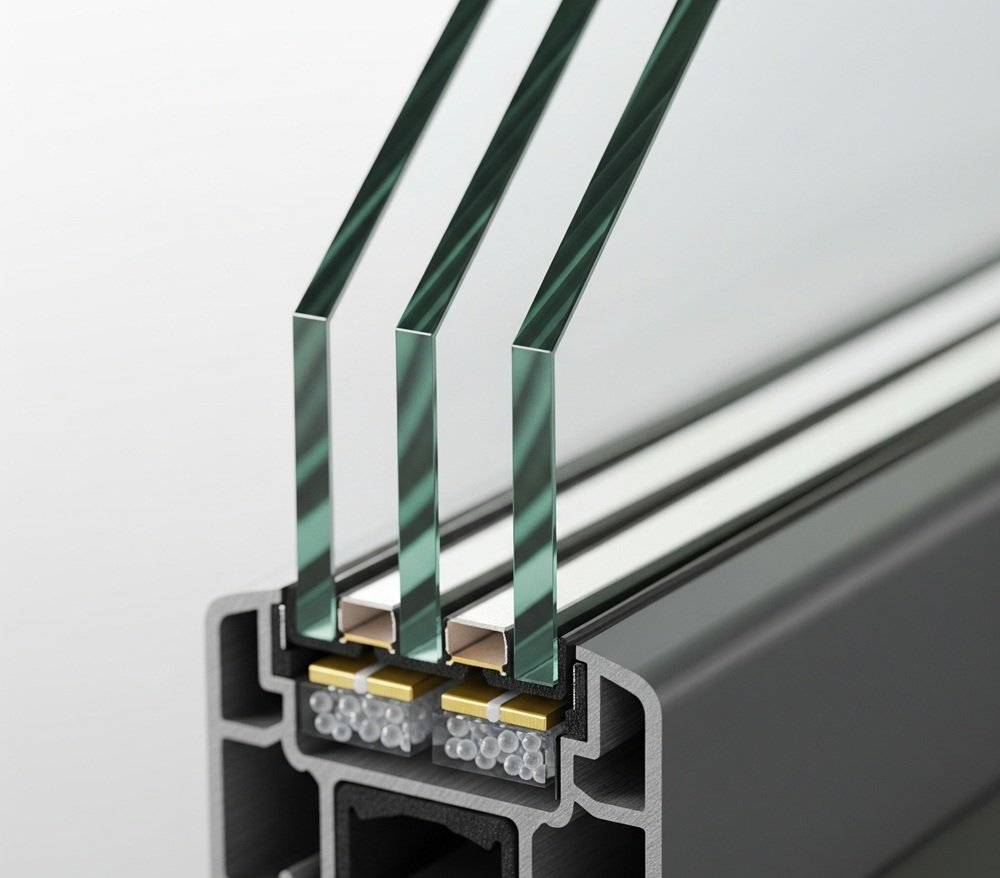
Triple glazing adds a third pane and two insulating gaps. It’s often filled with argon or krypton gas to enhance thermal and acoustic performance.
Benefits
- Superior insulation: U-value <0.8 W/m²K.
- High soundproofing: Rw rating up to 41 dB.
- Energy-efficient: Can reduce CO₂ emissions by 40–50%.
Downsides
- Expensive: ~£150–£200/m².
- Heavy: May require structural reinforcement.
- Long ROI: Payback period ~20–30 years.
Best Uses
- Extreme climates.
- Passive house designs.
- Homes near airports or highways.
Tempered Glass
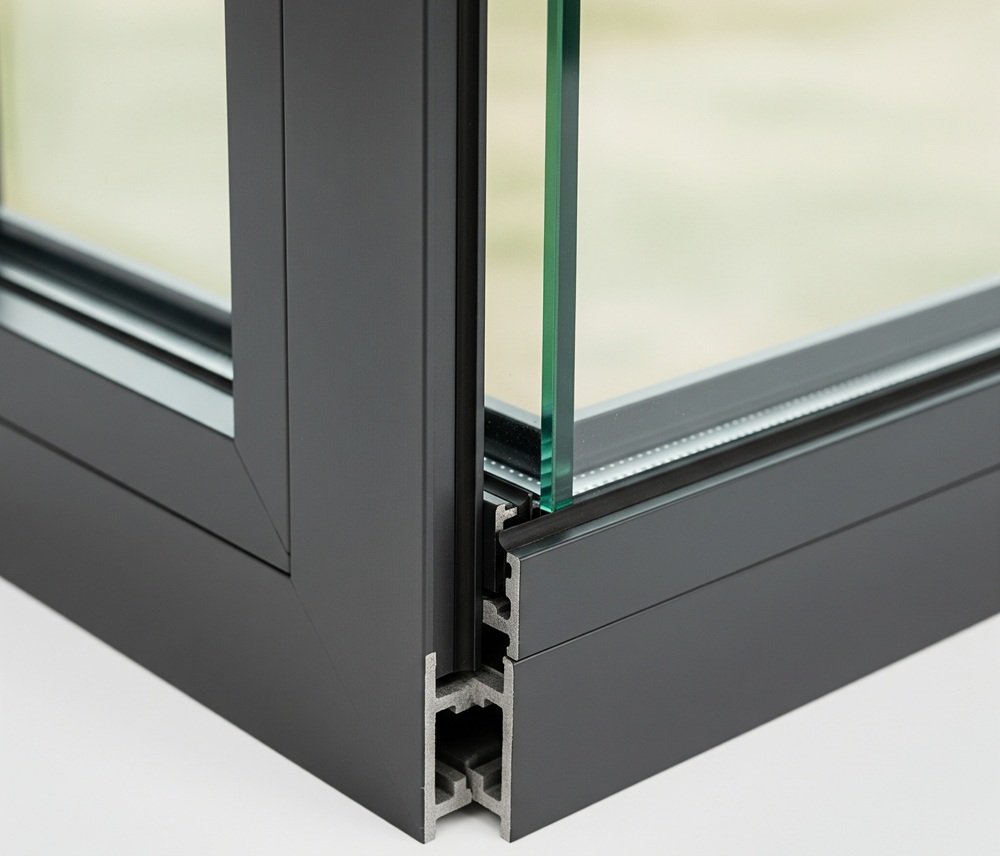
Tempered glass is heat-treated to ~650°C and rapidly cooled, increasing strength 4–5×.
Benefits
- High durability: Resists impact and thermal stress.
- Heat resistance: Withstands >250°C.
- Safety: Breaks into blunt granules, reducing injury risk.
Downsides
- Costlier than annealed glass.
- Cannot be cut or drilled post-tempering.
- Spontaneous breakage due to nickel sulphide.
Best Uses
- High-traffic zones.
- Homes with children or pets.
- Commercial storefronts.
Laminated Glass
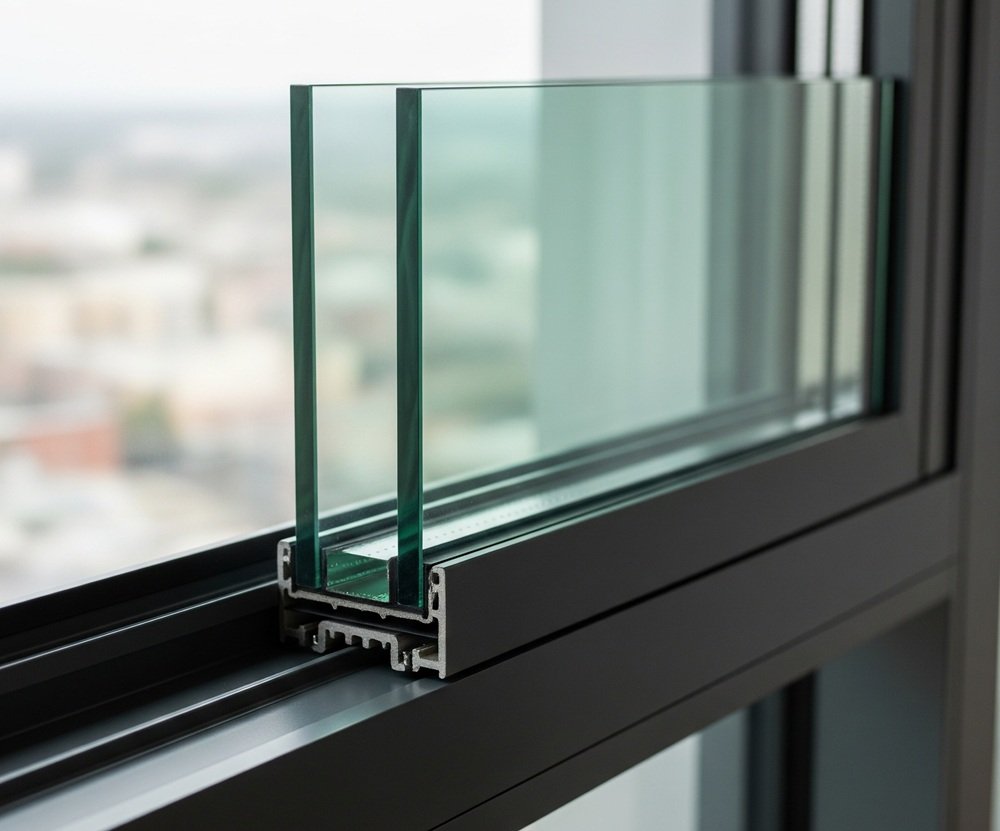
It’s made by sandwiching a plastic interlayer (usually PVB or EVA) between two glass panes. And the bonding occurs under heat and pressure.
Benefits
- Soundproofing: Reduces noise by up to 10 dB.
- UV protection: Blocks ~99% of UV rays.
- Security: Holds together when shattered.
- Storm resistance: Ideal for hurricane zones.
Downsides
- More expensive than tempered glass.
- Heavier and more complex to install.
- Cleaning the interlayer may attract blemishes.
Best Uses
- Noisy urban homes.
- Coastal or cyclone-prone regions.
- Banks, schools, and secure facilities.
Low-E (Low Emissivity) Glass
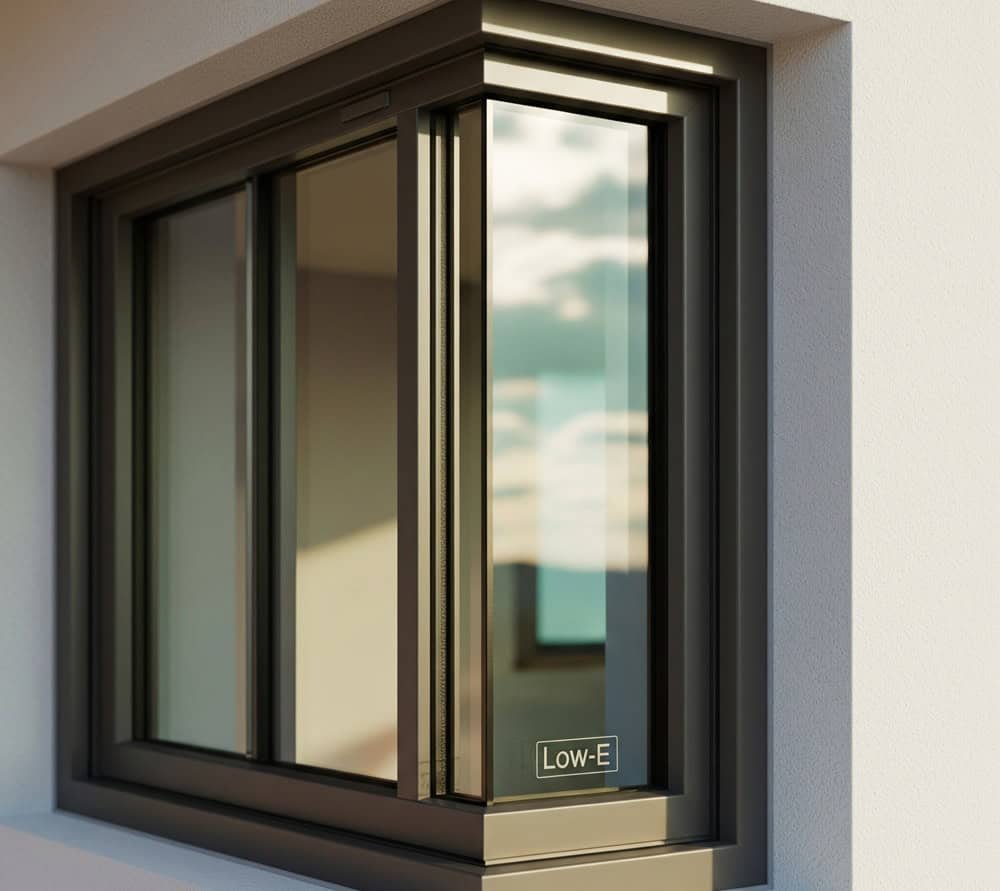
Low-E glass has a microscopically thin metallic coating (silver, zinc, or indium tin oxide) that reflects infrared and UV rays while allowing visible light.
Benefits
- Energy-efficient: Reduces heat transfer by 30–40%.
- UV protection: Prevents furniture fading.
- Solar control: Keeps interiors cooler in summer.
Downsides
- Higher cost.
- May reduce cell signal strength.
- Slight haze or tint.
Best Uses
- Homes in sunny climates.
- Buildings with large glass facades.
- Passive solar designs.
Frosted Glass
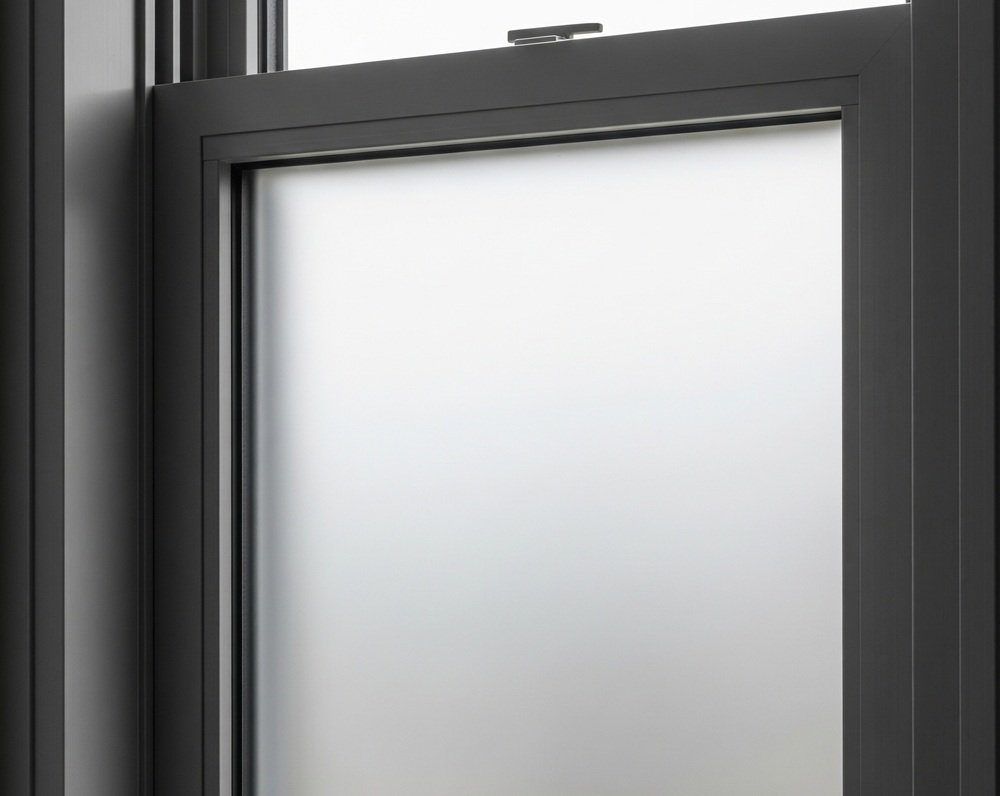
Frosted glass is chemically or mechanically treated (sandblasting or acid etching) to create a translucent surface that diffuses light.
Benefits
- Privacy: Obscures visibility while allowing light.
- Stylish: Adds modern aesthetic.
- Low maintenance: Hides fingerprints and smudges.
Downsides
- Limited visibility.
- Reduced natural light.
- Higher cost than clear glass.
Best Uses
- Bathrooms, offices, and partitions.
- Decorative panels and doors.
- Medical and lab environments.
Reflective Glass
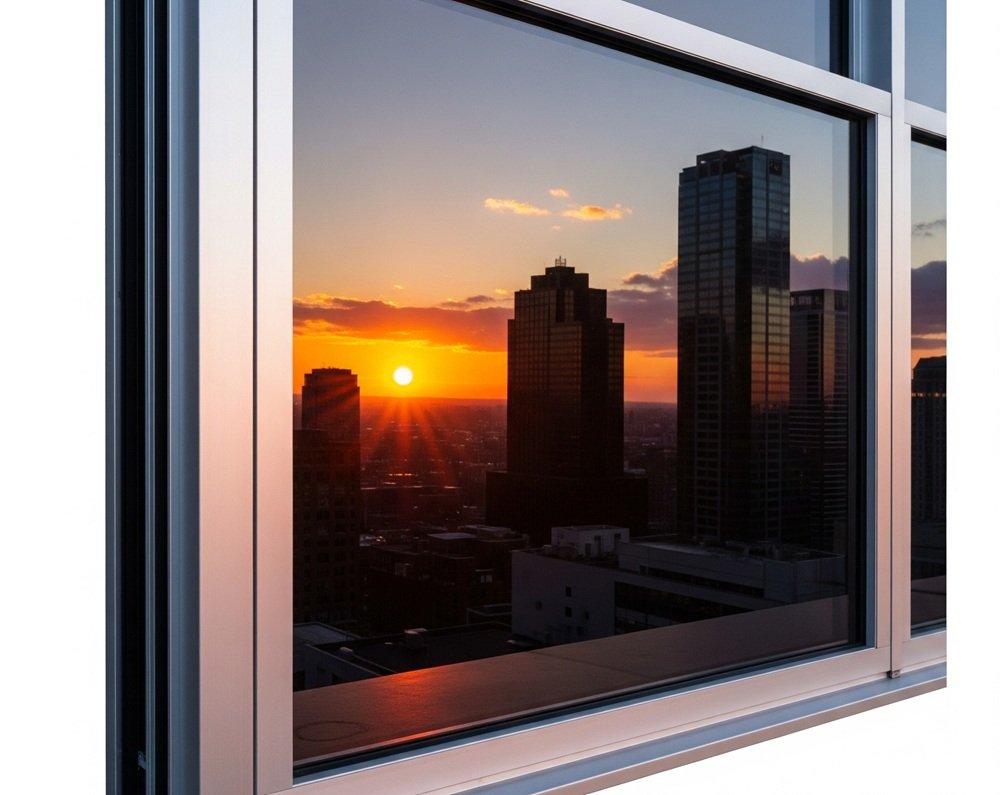
Reflective glass has a metallic coating that reflects sunlight, reducing glare and solar heat gain.
Benefits
- Glare reduction.
- Daytime privacy.
- Lower cooling costs.
Downsides
- Limited night privacy.
- Dark interiors.
- Reduced natural light.
Best Uses
- Commercial buildings.
- Homes in tropical zones.
- Facades with high sun exposure.
Tinted Glass
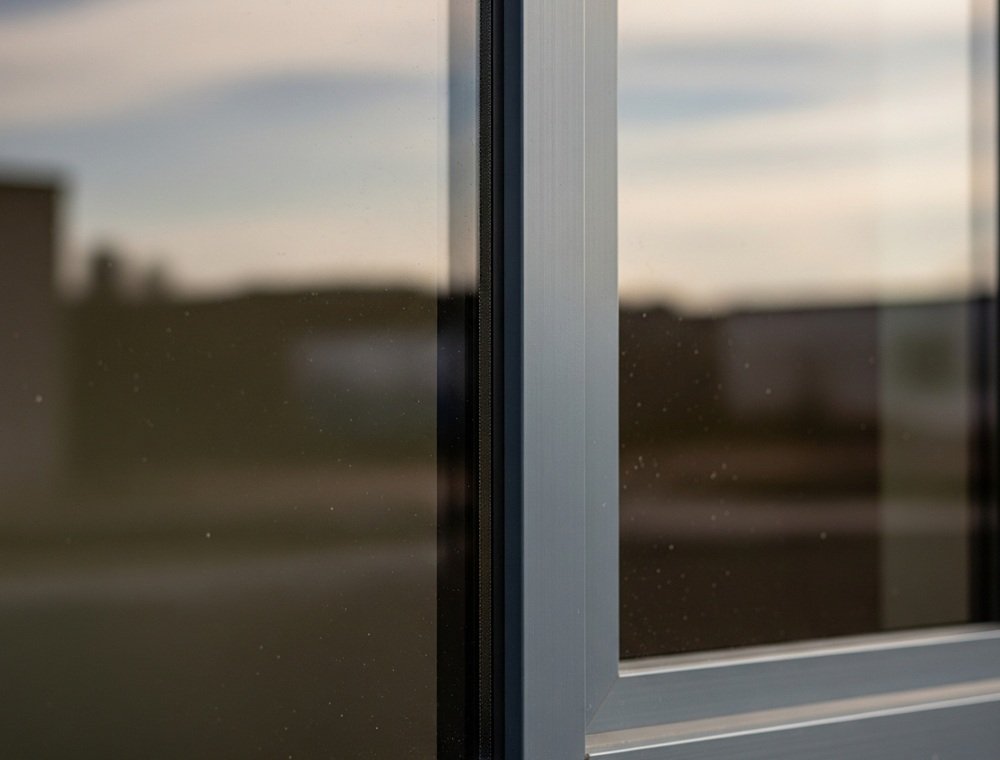
Tinted glass is infused with colorants (bronze, gray, green) during manufacturing to reduce solar heat and glare.
Benefits
- Enhanced privacy.
- Reduced heat and UV rays.
- Aesthetic appeal.
Downsides
- Darkened appearance.
- May block too much daylight.
- Higher cost than clear glass.
Best Uses
- Hot climates.
- Automotive windows.
- Modern residential designs.
Key Factors to Choose Aluminum Window Glass
Climate Considerations
For hot climates, use Low-E (Low Emissivity) or tinted glass to reflect heat and reduce cooling loads. Opt for double or triple-glazed glass with argon/krypton gas fill to retain heat in cold regions.
Choose laminated or insulated glass units (IGUs) with moisture-resistant seals to prevent condensation in humid/rainy areas.
Example: In Scandinavian regions, triple glazing with thermal breaks can reduce heat loss by up to 60%, improving comfort and reducing heating bills.
Energy Efficiency
Energy-efficient glass is essential for reducing utility costs and environmental impact. Low-E glass can reduce energy bills by 7–15% annually, depending on location.
Double/Triple glazing improves insulation through multiple panes with gas fills. Triple glazing achieves U-values < 0.8 W/m²K, ideal for passive homes.
Aluminum frames with thermal breaks prevent heat transfer. In Delhi, homes with thermal break aluminum windows saw 25–30% lower HVAC costs.
Soundproofing Needs
Noise pollution is a growing concern in urban environments. The PVB interlayer in laminated glass absorbs sound vibrations. It reduces noise by up to 40 decibels, ideal for homes near traffic or airports.
With double/triple glazed units, air gaps between panes disrupt sound waves. Meanwhile, specialized acoustic glass comes with high STC ratings (Sound Transmission Class). STC ratings of 40+ are considered excellent for residential soundproofing.
Security
Safety is paramount, especially for ground-floor windows and high-risk zones. Tempered glass shatters into blunt granules, reducing injury risk.
Laminated glass holds together when broken, deterring forced entry. It has uses in banks, schools, and hurricane-prone areas. Combine secure glass with reinforced aluminum frames and multi-point locks.
Aesthetic Preferences
Frosted glass offers privacy while allowing light. It’s ideal for bathrooms, offices, and partitions. Acid-etched frosted glass adds a modern touch to minimalist interiors.
Tinted glass adds color and reduces glare. It’s quite popular in hot climates and contemporary designs. Bronze or gray tints complement aluminum frames in urban homes.
Reflective glass reduces glare and enhances privacy. It’s relatively common in commercial buildings and sunny regions. Also, it may darken interiors and affect outward visibility.
Powder-coated aluminum frames in RAL colors allow full personalization. You can consider from matte black to champagne gold.
Budget Considerations
Balancing performance with affordability is key. The approximate cost for each aluminum glass type –
- Single Glazed (£30–£50): Temporary or budget projects.
- Double Glazed (£80–£120): Urban homes, energy-conscious users.
- Triple Glazed (£150–£200): Passive homes, cold climates.
- Tempered Glass (£70–£100): Commercial zones, family homes.
- Laminated Glass (£100–£150): Noisy areas, secure facilities.
- Low-E Glass (£90–£130): Sunny climates, modern homes.
- Frosted/Decorative (£60–£100): Bathrooms, offices.
- Reflective/Tinted (£70–£120): Hot climates, commercial buildings.
ENERGY STAR-rated windows can recoup up to 78% of their cost upon resale. Thai aluminum windows with laminated glass start at £30 per sq. ft, offering budget-friendly security and style.
Maintenance and Care for Aluminum Window Glass
Cleaning Tips
Use soft microfiber cloths or non-abrasive sponges. Mix warm water with mild dish soap for routine cleaning. Avoid ammonia-based cleaners on coated or specialty glass.
Preventing Damage
Keep pets and furniture away from windows to prevent scratches. Avoid using metal tools or rough cloths during cleaning. Apply protective films in high-traffic areas.
Ensure proper ventilation in humid environments for condensation control. Use thermal break frames and Low-E glass to reduce temperature differentials. Regularly inspect and clean drainage holes to prevent water buildup.
Inspect seals annually for cracks or brittleness. Replace weatherstripping if it shows signs of wear. Avoid pressure washing near window edges.
Ensuring Longevity
With proper care, aluminum window glass can last 20 to 50 years, depending on type and environment. A general maintenance schedule would be –
- Monthly: Clean glass and frames; inspect for grime.
- Quarterly: Lubricate hinges and locks; check drainage.
- Annually: Inspect seals, weatherstripping, and coatings.
Estimated Material Lifespan
- Tempered Glass: 20–30 years.
- Laminated Glass: 25–35 years.
- Low-E Glass: 20–25 years.
- Insulated Glass Units: 15–20 years.
Check the replacement indicators through –
- Difficulty opening or closing windows
- Persistent fogging between panes (seal failure).
- Cracks or chips in laminated or tempered glass.
- Noticeable drafts or water leaks.
DIY Installation: For Simpler Glass Types
- Prepare the Frame: Clean the aluminum channels thoroughly. Check for squareness using diagonal measurements.
- Insert Setting Blocks: Place 3–5 mm thick rubber blocks at the bottom corners to distribute glass weight evenly.
- Fit the Glass Panel: Use suction cups to lift and center the glass. Slide it gently into the frame, resting on the setting blocks.
- Secure with Glazing Beads: Snap or screw in the beads to hold the glass in place. Ensure uniform pressure to avoid stress fractures.
- Seal the Edges: Apply a continuous bead of silicone sealant around the perimeter. Smooth with a damp cloth for a clean finish.
Best For
- Single/double-glazed windows.
- Small residential projects.
- Budget-conscious homeowners with basic carpentry skills.
Professional Installation: For Complex Glass Types
When dealing with Low-E, triple-glazed, laminated, or tempered glass, professional installation is highly recommended. Hiring a pro is a good idea for –
- Precision: Complex glass types require exact alignment and sealing to maintain performance.
- Safety: Tempered and laminated glass are heavier and more fragile during handling.
- Warranty: Many manufacturers void warranties if glass is improperly installed.
- Compliance: Professionals ensure adherence to building codes and energy standards.
Installation Highlights
Use of laser levels and anemometers to test air infiltration. Application of weather-resistant sealants and multi-point locking systems. Structural reinforcement for heavy glass panels. On-site testing for water tightness and thermal performance.
Getting along with aluminum window glass may seem complex at first. Knowing the strengths and limitations of each type lets you make a clear decision. Each option serves a purpose tailored to specific needs, climates, and preferences.
Contact Alu Glaze for aluminium windows in Birmingham.
Frequently Asked Questions
Not necessarily. Double glazing offers better insulation and noise reduction. Single laminated glass may outperform the other in soundproofing and security.
Different glass types can influence compliance with energy codes, safety standards, and green building certifications like LEED or BREEAM.
In regions with intense sunlight, such as South Asia, the best options include –
Low-E Glass: Reflects heat while allowing light.
Tinted Glass: Absorbs solar energy and reduces glare.
Reflective Glass: Minimizes heat gain and enhances privacy.
Yes. They’re exclusively safe when paired with tempered or laminated glass. Tempered glass is 4–5× stronger than regular glass; it shatters into safe granules. Laminated glass holds together upon impact, deterring break-ins.
Glass selection is critical in areas prone to earthquakes or cyclones. Tempered glass resists impact and shatters safely. Laminated glass remains intact even when cracked. Structural glazing with reinforced aluminum frames can flex without breaking.

Editorial Staff’s at Alu Glaze are experts in commercial windows.

